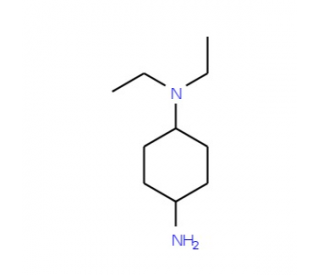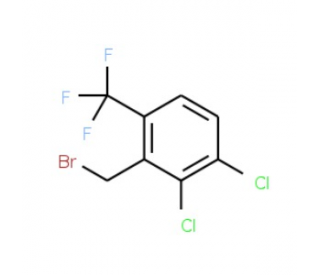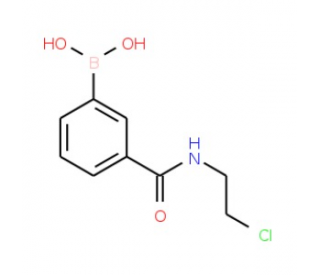詳細說明
Purity
>90%, by SDS-PAGE under reducing conditions and visualized by Colloidal Coomassie? Blue stain at 5 μg per lane
Endotoxin Level
<1.0 EU per 1 μg of the protein by the LAL method.
Activity
Measured by its ability to hydrolyze the substrate 4-Nitrocatechol Sulfate (PNCS). The specific activity is >0.3 pmol/min/μg, as measured under the described conditions. See Activity Assay Protocol on .
Source
Spodoptera frugiperda, Sf 21 (baculovirus)-derived Arg23-Leu502 with a C-terminal 6-His tag
Accession #
N-terminal Sequence
AnalysisArg23
Predicted Molecular Mass
55 kDa
SDS-PAGE
55-63 kDa, reducing conditions
8380-SU |
| |
Formulation Supplied as a 0.2 μm filtered solution in Tris and NaCl. | ||
Shipping The product is shipped with polar packs. Upon receipt, store it immediately at the temperature recommended below. | ||
Stability & Storage: Use a manual defrost freezer and avoid repeated freeze-thaw cycles.
|
Assay Procedure
Materials
Assay Buffer: 50 mM MES, pH 5.5
Recombinant Human Sulfamidase/SGSH (rhSGSH) (Catalog # 8380-SU)
Substrate: 4-Nitrocatechol Sulfate (PNCS) (Sigma, Catalog # N7251), 100 mM stock in deionized water
Sodium Hydroxide (NaOH) (Sigma, Catalog # 221465), 2 M stock in deionized water
96-well Clear Plate (Catalog # )
Plate Reader (Model: SpectraMax Plus by Molecular Devices) or equivalent
Dilute rhSGSH to 40 μg/mL in Assay Buffer.
Dilute PNCS to 20 mM in Assay Buffer.
Combine 150 μL of 40 μg/mL of rhSGSH and 150 μL of 20 mM of PNCS in microtubes. Include a Substrate Blank with 150 μL of Assay Buffer and 150 μL of 20 mM of PNCS.
Incubate at 37 °C for 72 hours.
Stop reactions and Substrate Blank by adding 300 μL of 0.2 M NaOH to each tube.
Load 200μL from each stopped reaction and Substrate Blank vial into a plate.
Read plate at 510 nm (absorbance) in endpoint mode.
Calculate specific activity:
Specific Activity (pmol/min/μg) = | Adjusted Abs* (OD) x Conversion Factor** (pmol/OD) |
| Incubation time (min) x amount of enzyme (μg) |
*Adjusted for Substrate Blank
**Derived using calibration standard 4-Nitrocatechol (PNC) (Sigma, Catalog # N15553).
Per Well:
rhSGSH: 2 μg
Substrate: 5 mM
Background: Sulfamidase/SGSH
Also known as N-sulfoglucosamine sulfohydrolase and heparan N-sulfatase, Sulfamidase/SGSH is an important member of the sulfatase family involved in the degradation of heparan sulfate (HS) (1). Different from the HS specific endosulfatases that remove sulfate from internal GlcNAc residues (2), SGSH removes sulfate group from the non-reducing end glucosamine residues on HS. The SGSH deficiency results in mucopolysaccharidosis type IIIA (MPS IIIA, Sanfilippo A syndrome), an autosomal recessive lysosomal storage disease characterized by neurological dysfunction but relatively mild somatic manifestations (3). Human SGSH shows 88.6% sequence identity with that of mouse sequence.
References:
DiezRoux, G. and Ballabio, A. et al. (2005) Annu. Rev. Genomics Hum. Genet. 6:355.
Morimoto-Tomita, M. et al. (2002) J. Biol. Chem. 277:49175.
Blanch, L. et al. (1997) Hum. Mol. Genet. 6:787.
Entrez Gene IDs:
6448 (Human); 27029 (Mouse)
Alternate Names:
heparan sulfate sulfatase; HSS; HSSN-sulphoglucosamine sulphohydrolase; MPS3A; MPS3Asulphamidase; N-sulfoglucosamine sulfohydrolase; SFMD; SFMDEC 3.10.1.1; SGSH; Sulfamidase; Sulfoglucosamine sulfamidase; Sulphamidase










 粵公網(wǎng)安備44196802000105號
粵公網(wǎng)安備44196802000105號